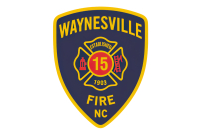Less might mean more if developers respond to lot-size changes in Sylva
When Mountain Projects came calling on Sylva leaders earlier this year because the group wanted to build five affordably priced homes within the town’s limits, commissioners found themselves in the uncomfortable position of having to deny the request.
The problem? A town law written just after World War II requiring almost a half acre of land per each house built. Mountain Projects, a regional community-action agency, missed the mark by a few thousand feet.
For its part, Mountain Projects was stymied by rules, too. The group was trying to meet its own mandated requirements that it build at least five houses, or not build them at all.
The situation underscored the need to reconsider the town’s minimum-lot requirements and make them less burdensome, Sylva Commissioner Christina Matheson said this week.
Sylva’s requirement for an almost half-acre lot per house was twice the required yard as mandated for homes in Canton, and 50 percent more than in Maggie Valley.
“We were probably the most restrictive municipality in the entire area, as far as the lot requirements go,” Matheson said. “Requiring that much property to construct a house makes it almost unaffordable. Particularly for families and elderly people.”
Related Items
Requirements for nearly a half-acre per new house first surfaced as a hot-button issue here in late 2008, when Planner Jim Aust resigned. He said town leaders — by way of refusing to change Sylva’s excessive lot-size requirements — were preventing affordable housing from ever being built. Aust publicly accused Mayor Maurice Moody of wanting only $500,000 houses in the town he oversees.
The town’s decision to lighten up when it comes to mandating how much land a person must own before building a house came by unanimous board vote. The ‘yes’ votes included those of Commissioners Harold Hensley and Ray Lewis, both subjects of Aust’s “I’m-going-to-quit because what’s-the-point-in-trying-anymore” ire. Moody didn’t get to vote, because the mayor only votes if there is a split decision by the board.
These are the reasons most towns — including Sylva now, too — generally allow smaller lots:
• They keep the costs of building roads and water and sewer lines lower because the infrastructure doesn’t have to be extended so far.
• More homes per acre reduces land costs, helping to keep the building — and selling — price of houses down.
• Intensified density in towns reduces urban sprawl from encroaching on the countryside.
“The (new) lot sizes are more in line with other similar communities, and will offer more housing options for residents,” Town Commissioner Stacy Knotts said.
Matheson did not know if Mountain Projects might be interested in revisiting its affordable-housing proposal. She did say town leaders hope the less restrictive requirement stimulates development and growth in Sylva.
When Aust quit, he said just 78 dwelling units had been built in the town in a seven-year span.
The town law, said Matheson — a former assistant district attorney — was “clearly designed to limit growth.”
New Sylva Minimum Lot-Size Requirements:
• R-1 went from 20,000 square feet to 17,500 square feet.
• R-1A and R-1B stayed at 17,500 square feet.
• R-2 changed from 17,500 to 12,500 square feet, with duplexes at 17,500 square feet.
• R-3 went from 17,500 square feet to 8,000 square feet, with duplexes at 13,000 square feet. Also in R-3, multi-family developments (more than two units) minimum-lot size increases by 5,000 square feet for each additional unit.
• B-1 stays the same with no lot-size requirements.
• B-2 and B-3 changes from 17,500 square feet to 8,000 square feet, and increases to 13,000 square feet for duplexes and 5,000 square feet for each additional structure in multi-family developments.
• G-1 did not previously have requirements, and now has a minimum lot-size requirement of 12,500 square feet and 17,500 square feet for duplexes.
• Professional Business District stays the same at 10,000 square feet, and I-1 changes from 17,500 square feet to 8,000 square feet with a 13,000 square-foot requirement for duplexes, and 5,000 square feet for each additional structure for multifamily.
SOURCE: Town of Sylva









